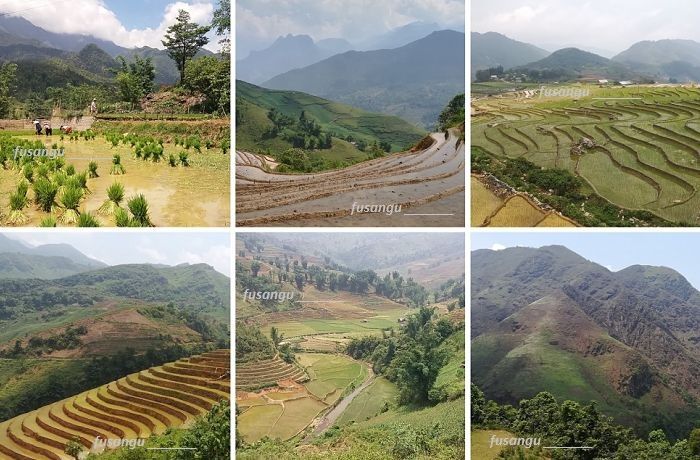
Sa Pa is a popular tourist destination located in the heart of the mountainous region of Northern Vietnam. While the town is rather ugly and has little to offer, it serves as an excellent base to visit the magnificent province of Lao Cai.
Quaint and picturesque villages, the idyllic atmosphere of remote valleys, imposing mountains, vivid and vibrant colours of forests and rice paddies are only some of the reasons who draw large crowds of tourists to this area.
In this page we outline a programme for a 3-day visit to Sa Pa and its surroundings. A classic, often proposed by travel agencies, this itinerary is also suitable for independent travellers.
Day 1 – Sa Pa
Sa Pa is a small town at the centre of a region of outstanding natural beauty. It lies in Lao Cai Province, not far from the border with Lai Chau Province.
The city itself has turned into everything that mass tourism should be despised and feared for. A fake, artificial environment that caters to meet basic needs of the cosmopolitan non-cultural world.
The region, inhabited by communities, different to the prevalent Kinh (Viet) ethnic group, is a mosaic of cultural and natural landscapes. Rice paddies adorn valleys and mountains with their hypnotic patterns, small houses retain the shapes and features of the old architecture, life flows slowly in accordance to the rhythm of seasonal changes. You can experience all this only if you get out of the tourist paths or at least venture a bit further away.
Guided tours allow to grasp sights of the life in the villages near Sa Pa. These villages are mostly inhabited by H’mong and Dao communities. A classic half-day tour includes visits to Lao Chai and Ta Van, the first villages you encounter when you explore the Valley of Muong Hoa.
Day 2 – Ma Tra, Ta Phin
The next day you can visit Ma Tra and Ta Phin villages. Located north of Sa Pa, they are among the most picturesque and least spoilt landscapes of Sa Pa’s area.
Tours normally include a visit to a local house, basic introduction the customs and aspects of the local culture as well as some simple hands-on activities.
Day 3 – Mount Fansipan
With its 3.143 metres of altitude, Fansipan (Phan Xi Pang) is the highest mountain in Vietnam and whole Indochina.
A cable car now connects Sa Pa to its summit but if you are a keen hiker you should not miss the chance of ascending the mountain.
As the paths are quite dangerous and weather changes very quickly, independent ascending of Fansipan has been made illegal and the authorities strictly and zealously enforce the ban.
One day is too little time to complete the ascent and descent. Enquire with a tour agency that offers one-day tour. You can reach the summit on foot and get back to Sa Pa by cable car.
Hiking on Fansipan requires a fit condition, experience and readiness to face difficulties and discomfort.
From Hanoi to Sa Pa
Time is very limited so it is best to reach Sa Pa overnight. You can either take a train to Lao Cai and transfer to Sa Pa by local shuttle bus or travel exclusively by night bus.
Buses leaving at 22:00 reach Sa Pa around 6:00. The ride costs 250.000-350.000 dong depending on the service level.
Where to stay in Sa Pa
The town of Sa Pa itself has very little to offer. The centre is a a large cluster of rather ugly modern buildings, mainly occupied by hotels and restaurants.
While in most towns and cities the effects of rapidly rising mass tourism have generally be restricted to small tourist quarters, here the whole town seems to have no other sense and vocation but to cater for tourists. A similar experience cannot even be had in Da Lat.
Staying in the city centre is reasonable only if you look for a high-end accommodation solution or for practical purposes, such as being close to the bus station if you need to leave early in the morning.
Staying at a local guest house in one of the villages located south of Sa Pa is the best way to experience the local culture. Note that this solution has become very popular and as a consequence you will not be able to completely escape the profound alterations brought about by mass tourism.
If you really wish to find that idyllic beauty and sense of remoteness that the imposing landscape commands, you need to proceed further southwards.
Related articles:
First journey to Vietnam: suggested 2-week itinerary

